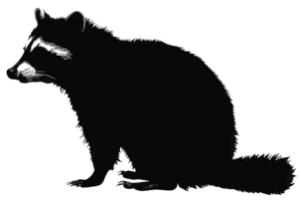Animals in the Attic
Eric: All right. So we’re here with All City Animal Trapping. Today I want to talk about animals in the attic. So if I’m hearing something in my attic, what should I do?
All City Animal Trapping: Well as a homeowner or a rentee or anything like that, every house is different. And what you’re going to hear is going to be different in every house based on the amount of insulation that’s up there. If the animal is walking on dry wall that influences the acoustics of the house and what people actually hear when they’re inside. As the owner of the property or somebody who lives there, there’s not a ton of ways to accurately determine what type of animal it is up there. Usually we just need to know, are you hearing scrabbling, scratching, chewing, or any vocal noises? That can help guide a trapper to kind of know where to start looking at what type of animal to expect up in the attic. If you’re hearing cooling or chirping, things like that, and it’s around holiday season. Like right now we are heading into raccoon baby season. And so they do like to get up into attics and tuck themselves into really tight areas.
So that they feel like their babies are protected from other raccoons. So raccoons are pretty aggressive in general. The male raccoons will kill the babies to put the mothers back in the heat so they can have their babies. With that mother, as long as it’s still within season. So a lot of times what they’re trying to do is tuck themselves into an area where the mother can defend those babies no matter what. Until they’re old enough to come out and be reintroduced to the group that she was with originally. But she detaches from the males. So if you’re hearing cooing or chirping around the cold seasons around the winter. A lot of times it’s either a mother’s setting up a nest tab babies, or that’s the baby’s already calling into the mother to be fed. So outside of that, the majority of what people are going to be hearing is either footprints or scratching or chewing.
If you’re hearing chewing, a lot of the times it’s rodents. Their teeth never stop growing. They need to sharpen them. And then that’s also not sharpen them, but cut them down so that they actually fit into their mouth. Actually rodents, if they don’t do that, they’ll actually die because the teeth become too long for the mouth itself. They also like to chew through things to just to create more openings and things like that. But outside of those determining factors, really an inspection is the only way you’re going to figure out what’s going on exactly in the attic. And how big the extent of the damage is. So rodents while they could be very, very, very soft with the footfalls and not sound like very much rats and mice. They can do a ton of damage with the urine and the droppings up there. Animals can influence the way that house smells. They can chew through air conditioning ducts. All that sort of stuff and really influence up how the house works and give off some pretty strange smells. At the same token raccoons strangely enough, don’t like to go to the bathroom in the attic.
So they’ll come out everyday. Every time I know it’s raccoons, I go up on the roof and usually behind the chimney or in a little nook or cranny you’ll find a big pile of droppings. And it’s almost like they’re surveying the neighborhood or something when they come out at night. So they can determine what they’re going to do. But the good thing is there is a good thing about having raccoons in your attic is that they’re not going to go to the bathroom in there. Opposed against possums, which are going to go to the bathroom everywhere so. The same thing with rats, they go to the bathroom nonstop while they’re up there. So different animals are going to require, one, a different person or at least the train trapper to identify paw prints, dropping sizes. And most importantly, entry points, entry points are a big deal. A lot of the times I can look around the perimeter of a house or up on the roof and know what type of animal it is before I’ve ever even set foot in the house, just based on the size of the holes. So if we’ve got a softball size hole, you’re talking a raccoon or a possum. If you can only fit a finger to through the opening itself, you’re probably looking at a rat or a mouse. So a lot of that helps determine what type of animal it is. But as a homeowner, if you’re not sure what you’re looking for, sometimes it can be kind of tough.
Eric: So I think at that point they would contact you guys and have you come out and take a look at it and give them an idea what they’re up against.
All City Animal Trapping: Absolutely, because just pop in the hatch to your attic and looking up in there while I encourage it, it can help you if you don’t know what you’re looking for, or even what you’re looking at, it’s pretty difficult.
Nine times out of ten, when I go into an attic, I do not see the target animal while I’m up there. They think I’m a predator and they’re going to come hide. They’re nocturnal it’s daytime when I go up there. So they hear a noise at a time that they’re supposed to be sleeping. They’re going to tuck themselves into the farthest corner that they can to hide. So seeing the animals in the attic almost never part of the solution. Usually for us, it’s finding the droppings, finding the popper and finding the openings will help us determine what trapping protocol we need to use.
Eric: Okay. And if anyone is interested, and they have animals in the attic. They could go to allcityanimaltrapping.com. All your contact information is there. Thank you so much for sharing this information with us.
All City Animal Trapping: Thank you.





















